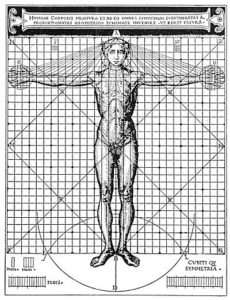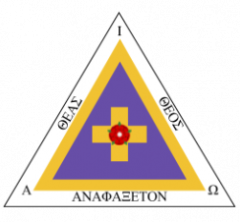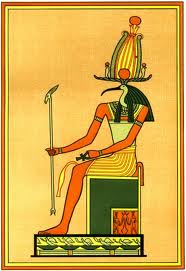There is a long standing tradition in the Western Mysteries that we are to treat “the body as a temple”. There is a lot of information that has fostered many written works on body postures and alignment.
The practical work in beginning studies there will only be a few words mentioned as to the reasons why you would adopt body postures and alignment. What is happening when we practice these postures, and the importance of following the directions given.
It is important to look at the body as a temple. The dwelling place of the highest part of who you are. This has been described as a spark of the Divine Light within you in. It has always seemed most appropriate for this type of spiritual work.
Why these Postures are Important

When we do body postures and alignment we are aligning our physical body, our temple, in a way that allows certain energies to flow through us more readily, thus preparing ourselves for a higher experience. Each posture below has their specific purposes which will be explained under each heading. When done with intention, we create a holy place within our very being.
Another reason we do Body Postures and Alignment has to do with what is happening when we do them. Not only are we allowing energies to flow more easily. But by consciously taking control and awareness of our physical bodies we are turning our focus to who we really are. We align our consciousness to a higher aspect of what we are as human beings. When we do this the physical body will respond in a like manner. A healthy relationship is created between the higher and lower selves as well as the physical body. This is one of the reasons why ascetic practices have been present in the West and the East. It is the appropriate relationship of the Divine to the physical that has been emphasized regardless of outward appearance.
Benefits for Meditation and Other Exercises
Practicing these postures can lead you to staying in meditation and other exercises for long periods without fatigue or distraction. Not following the directions below may cause a “kink in the hose” affect. The “kink in the hose” affect can be explained by using the image of a garden hose. If you turn your garden hose on and bend a section of it at more than a 90° angle the water pressure will lessen. Bending it even further will eventually stop the water flowing out of the end of the hose. One of the purposes of the following postures is to allow the energies to flow more freely through the physical body and not slow down the flow of those energies.
Why Nothing Crosses in these Postures
The exercises below do not have arms or legs crossed nor do they have any angles more than 90°. In fact the only one with a 90° angle is the sitting posture. Also, these postures have been used in the Western tradition for millennia. Looking at Egyptian, Sumerian, Babylonian, and Byzantine art work will give you an idea of their age. These postures do have Eastern counterparts, especially when one looks at the basic Qi Gong postures, but the ones outlined below work very well for Western bodies where our hips and other parts of our physical bodies may not be as open as our Eastern brothers and sisters.
Physical Benefits of Alignment
One other aspect regarding these postures is the affects they will have on the physical body. Again, there are many written works going back thousands of years on their effectiveness and practice, especially in the East. When the body is aligned correctly the internal organs will be invigorated and allowed to function in a more healthy way. The spine and muscular system will also be toned slightly. Anyone who has held the sitting and standing postures can attest to the “work out” their body will receive.
This will lead to a better posture, and a better posture will lead to better alignment and practice of these postures. They are both interrelated, not just in a physical sense but also a spiritual one. These lead to a better overall sense of well-being and the basic principles of these postures should be carried out in your daily life. Unless we can bring our spiritual practices into our daily lives and help others with an anonymous sense of service they may simply become an escape, feed one’s sense of self-importance, or may be utterly useless. The only way one was ever able to enter the Mystery Schools of old and today, is contained in this previous sentence.
Standing Posture
The Standing posture is what can be called a natural, relaxed and poised, standing position. The head is level, with the ears aligned with the shoulders when looked at in a side view. The chin is slightly down. Both of these alignments allow for the neck to be aligned properly with the spine. The shoulders are held loosely but poised with the effect of the chest being neither stuck out nor concave.
A happy medium can be achieved by imagining someone gently pushing down on the tops of shoulders allowing tension to release and relax your shoulders, upper back and chest area. When the shoulders are found in the position just mentioned just let the arms hang naturally and a slight bend in the elbows will take place and the hands will be slightly floating in front of your thighs or lightly brushing them. The feet should be placed just a few inches apart with both toes mirroring each other facing forward. You should feel balanced and stable and if you need to adjust the width of your feet to feel comfortable then do so.
Lying Posture
The Lying Posture is mainly for relaxation where the physical body may be put at ease and peace. Lay on a flat hard surface such as a hardwood or tile floor. A carpeted floor works fine as well as long as it doesn’t feel too cushioned. While lying flat have your feet about hips width apart and let the toes point slightly outwards to the sides of the natural pull of gravity. Your arms should be placed slightly to the outside of your hips, palms of your hands down with a slight bend in the elbow.
Your head will find its own natural resting place and should have the chin tucked down slightly towards the throat. Be sure to allow your buttocks and hips to find a natural center of gravity giving a sense of sinking into the Earth below you. This position should give you a sense of total relaxation and a sense of losing awareness of your physical body. This is one of the reasons the Eastern traditions call it Savasana or “dead man’s pose”.
The Sitting Posture
The Sitting posture can best be seen from Egyptian hieroglyphics, as well as Byzantine depictions of Christ, the Virgin, and Saints. It will give your entire being a sense of an alert, poised yet still relaxed state. It allows the internal energy systems to flow freely and without any restraint.
This should be done in a firm seat where you will be able to comfortably have the thighs as horizontal to the floor as possible with the spine as erect as possible. This is achieved by placing your thighs side by side, not touching, the buttocks slightly turned upward, your feet flat on the floor and horizontal to each other. The feet in this position allow the thigh folds to stay open. The hands should be placed on the knees, or close as possible, allowing the arms to hang loosely. The head should have the chin slightly tucked. The whole body will then be poised. This position may feel uncomfortable the first few times you do it but this will fade very quickly and is one of the most powerful positions used in the Western Mysteries.
Practical Exercises
The following Body Postures and Alignment should be practiced in a quiet setting where you will not be disturbed for about five minutes. The four-fold breath given below, or other neutral type of breathing will work best with these postures. They should be done in the following sequence and for the approximate duration given. Do not go ahead to the next posture until you have worked up to the time allotted below. Don’t rush, be patient with yourself, and persevere.
- Standing Posture (5 minutes/day) – hold the standing posture with eyes closed for five minutes straight. Do so once a day for five days within a week. Record the results in your journal noting the physical sensations and what your thoughts are during this time period. When done with the five days you may move on to the next posture.
- Lying Posture (5 minutes/day) – hold the lying posture with eyes closed for five minutes straight. Do so once a day for five days within a week. Record the results in your journal noting the physical sensations and what your thoughts are during this time period. When done with the five days you may move on to the next posture.
- Sitting Posture (5 minutes/day) – hold the sitting posture with eyes closed for five minutes straight. Do so once a day for five days within a week. Record the results in your journal noting the physical sensations and what your thoughts are during this time period.
Four-Fold Breath
- Breathe in for a count of 4
- Hold the breath for a count of 4
- Breathe out for a count of 4
- Hold the breath out for a count of 4


